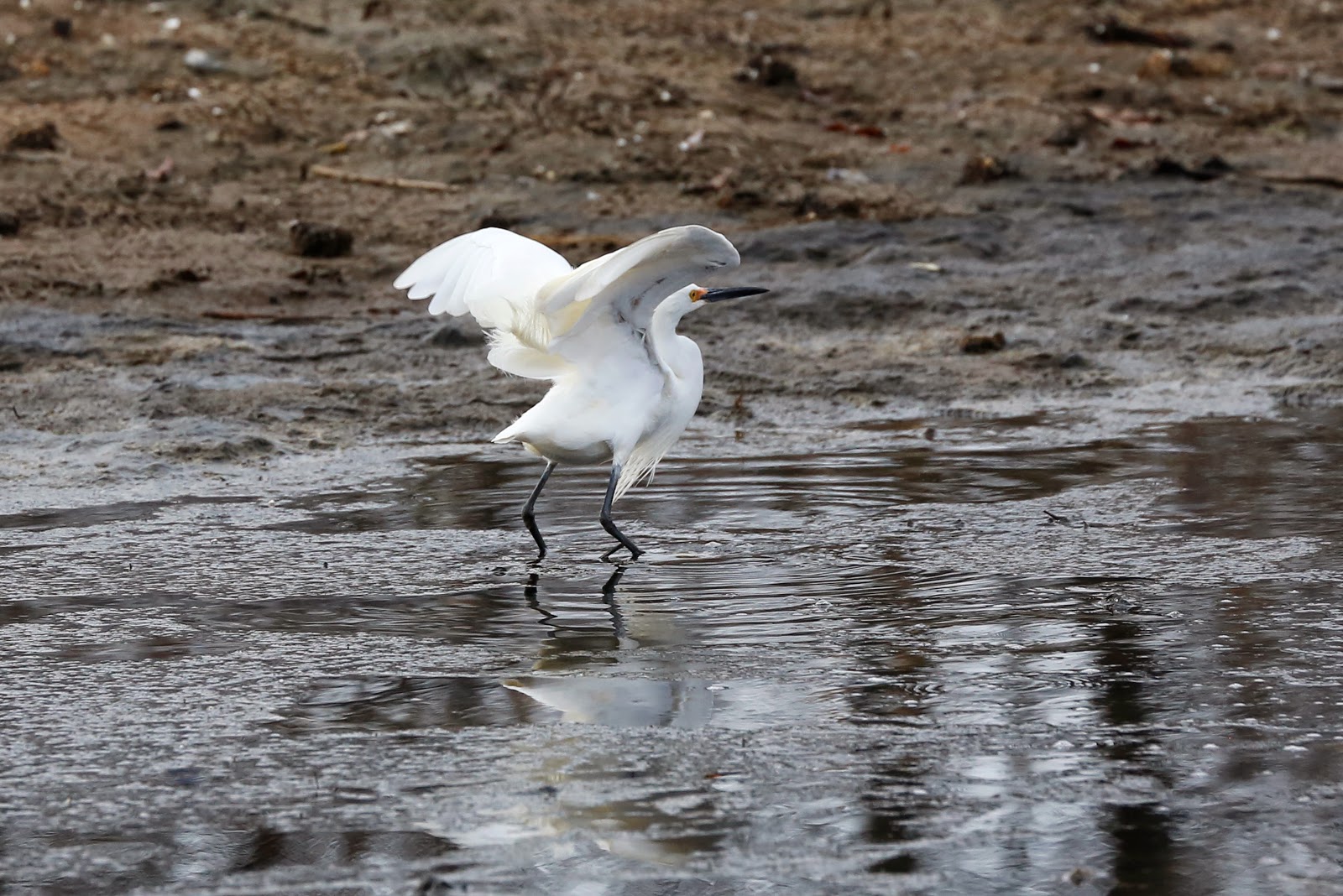Chestnut Eared Aracari - Arasari Brązowouchy
Brazil, Pantanal, 2013
Description
The Chestnut-Eared Aracari is the largest of the smaller toucans weighing an average of 300 grams. It is similar in appearance to the Black Neck Aracari, except it is larger and more colorful. The Chestnut Eared has a dark brown beak except for a yellow-orange stripe running longitudinally along the upper side of the culmen broadening as it moves forward to the tip, which is entirely dull yellow. The iris is white (sometimes yellow), and the eyeskin varies from turquoise to dark gray. The crown is black with the throat, ears and nape chestnut brown. The back, wings and tail are olive green and the rump is red. Whereas the Black Neck has olive thighs, the Chestnut has brown thighs. In general, toucans and aracaris are known for their large and showy bills. Despite its size, the bill is very light, being composed of bone struts filled with spongy tissue.
The Chestnut-eared Araçari has fairly direct flight performed with rapid wingbeats. The flight is rather weak, with occasionally short glides.
When they are in groups, they fly in single file across the forest openings and clearings, in upper level of trees.
Habitat
Chestnut Eared Aracaris enjoy the widest distribution of any Aracari species and are one of the most common and easily observed of all the toucans in the wild. They are a lowland species found throughout western Brazil north to eastern Colombia and south through eastern Peru to northern and eastern Bolivia and northern Argentina. They are commonly seen in close connection with human habitation, visiting small towns and farms, where we have seen them eating ripe papayas still on the tree.
These aracaris are found in wet forests and savannas, often close to cultivated land. The most widespread aracari, they are found in Colombia, Peru, Bolivia, Brazil, Paraguay, Ecuador and Argentina.
Voice
The Chestnut-eared Araçari main call is a piercing and high-pitched “sneeep” or a longer “psheee-eep”. These sounds are uttered in irregular series.
We can also hear a single “tekk”, a low “eeee-eee”, a call with four whistled “weet” notes and a longer woodpecker-like “pyeee-tyee-tyee-tyee-tyet” which could be a kind of song.
While calling, the bird often twitches and cocks the tail, and throws the head about.
Diet
The large bill of these birds is a highly efficient thermoregulation system. Also, it allows the bird to reach deep into tree holes to access food (they eat mostly fruit and insects). The bills of females are usually smaller.The Chestnut-eared Araçari is a frugivorous species, feeding on fruits from several plant species. However, it may also take flowers and nectar. It catches insects, and is known to hunt nestling birds and it takes eggs too. It preys on nests of some bird species, and may attack woodpeckers, driving them from their holes.
Fruits are taken from the branch, sometimes by hanging upside-down. It searches for food in bark crevices and all cavities in trees. The Chestnut-eared Araçari forages usually in the lower canopy and understorey, shrubs and trees.
These birds usually stay well away from the larger toucans, because a hierarchy by size is often established at food sources.
Reproduction
Breeding season varies according to range. Two to four white eggs are laid in nest holes previously made by woodpeckers. Both sexes incubate for a period of 14-16 days. It is noted that the male will assist when the female is feeding. Both parents feed the chicks, often by regurgitating food items. Fledgling occurs at 30 to 40 days.
Chestnut-eared aracaris live in flocks of over ten individuals. Some displays take place during breeding season, such as raising the rump feathers or displaying their colorful, patterned bill.
The breeding season varies according to the range.
The Chestnut-eared Araçari often nests in groups with some other pairs, up to 10-12 birds.
The nest is often placed in old woodpecker hole. This cavity is probably enlarged by excavating, thanks to the large bill.
Did you know?
Chestnut Eareds are attractive aviary birds and make wonderful pets. They are among the two or three most intelligent of the small toucans, very docile, imprint quickly when handfed as babies and are easy to teach tricks and to potty train. They enjoy the company of people, like to be scratched on the head and neck and will sit and purr contentedly in your lap for hours. Their care is the same as for all other toucans.
Photos by others
Juan Pulasso
imgkid com
Photo-passion.com
Credits
Oiseaux-birds


































